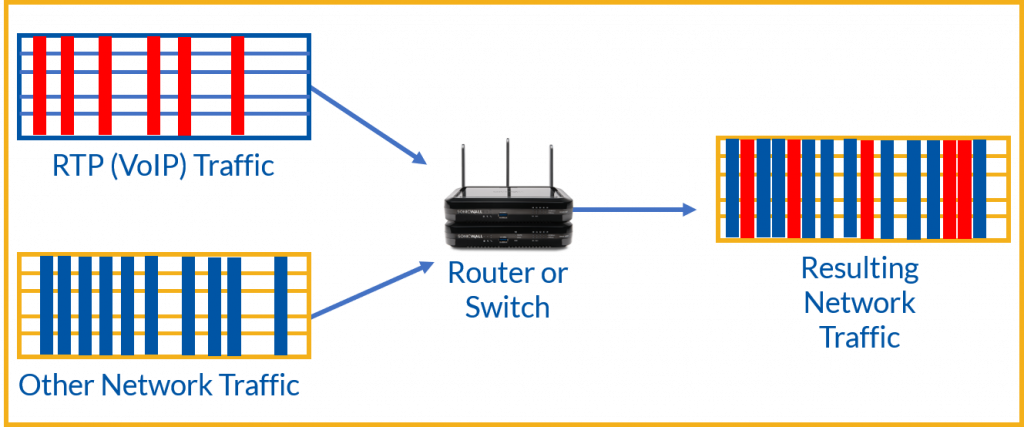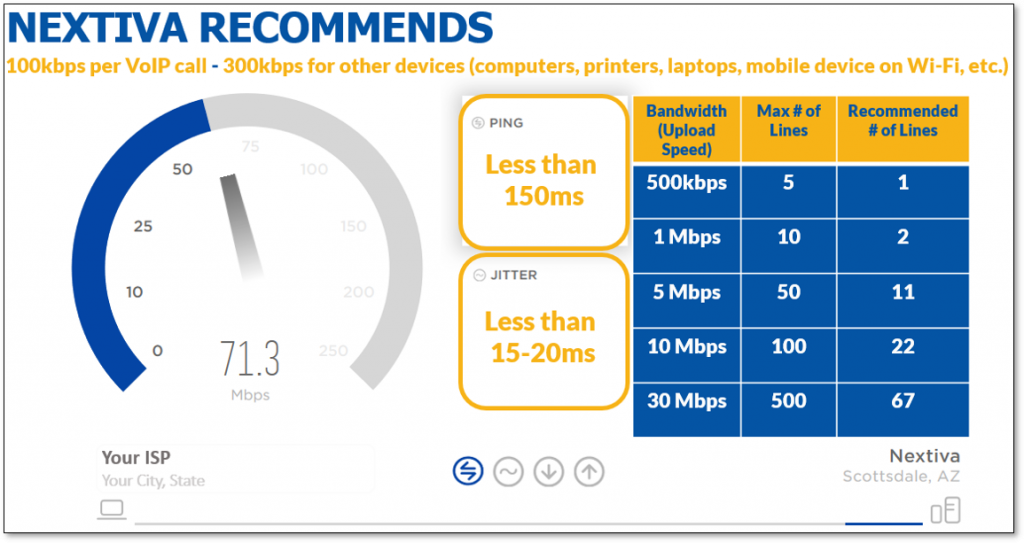Jitter is the variation in the time between data packets arriving, caused by network congestion, or route changes. The longer data packets take to transmit, the more jitter affects audio quality. The standard jitter measurement is in milliseconds (ms). If receiving jitter is higher than 15-20ms, it can increase latency and result in packet loss, causing audio quality degradation.
 Quality Phone Calls Require a Jitter Rating of Less than 15-20ms
Quality Phone Calls Require a Jitter Rating of Less than 15-20ms
Symptoms of jitter include:
- Choppy audio
- Delayed or dropped calls
- Static, choppy, or garbled audio
Identifying Jitter Issues
The first troubleshooting step is to verify the integrity of the local network. VoIP devices require an upload and download speed of 0.1 Mbps. Computers and connected devices such as wirelessly connected cellular phones, printers, etc. need an upload and download speed of 0.3 Mbps. To run the Nextiva Network Quality Speed Test, click here. Compare the results with the chart below.
 Recommended Network Quality Speed Test Results
Recommended Network Quality Speed Test Results
If the results of the test show a Jitter rating higher than 15–20ms, there is most likely an issue with the Internet Service Provider (ISP). If unable to test plugged directly into the modem, the ISP should be able to run the test. If they experience any jitter issues on their end, they should be able to resolve them.
Test While Jitter is Good:
Test the network while the jitter is lower than 15-20ms to verify good audio. Jitter results can vary, making it very difficult to diagnose the problem. The fluctuation might have been high when the issue was occurring and corrected itself by the time the test completed.
If network conditions are reliable on the ISP’s end, there may be an internal network issue. Try running the test plugged directly into the router and work back until discovering what network device is causing network jitter.
Firewall Access Rules
Firewall Access Rules control the flow of inbound and outbound Internet traffic from the local network to the public Internet. Both routers and firewalls use access rules to control traffic and verify the source and destination addresses are permitted to send and receive traffic on the local network.
Ensuring that the setting for SIP ALG is disabled is another frequent troubleshooting step to fix one-way audio issues. SIP ALG (Application Layer Gateway) is a security setting on most commercial routers. While computer traffic will work fine on the network, the setting can affect the data stream for VoIP. SIP ALG causes one-way audio issues and typically affects all phones on the network. For more information on SIP ALG, click here.
Another culprit that can cause one-way audio is Double NAT. Network Address Translation (NAT) provides private IP addresses to all devices on a network. If more than one piece of networking equipment (typically a gateway or router) performs NAT, audio data may be affected. Nextiva does not recommend Double NAT for VoIP. For more information on Double NAT, click here.